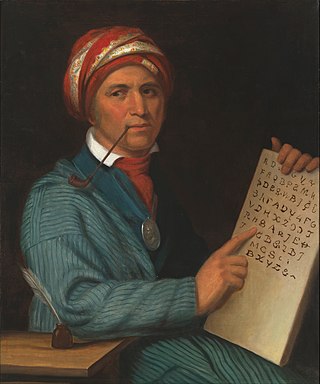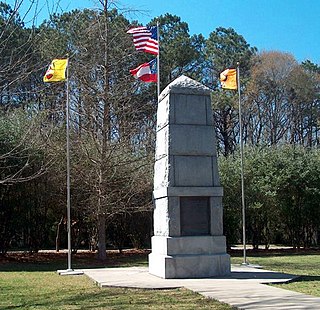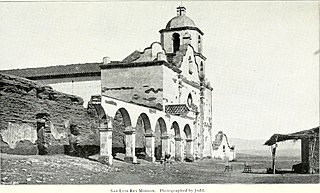
Gregory D. Smithers (born 1974) is a professor of American history at Virginia Commonwealth University in Richmond, Virginia. [1] An ethnohistorian, Smithers specializes in Native American and African American histories.

Gregory D. Smithers (born 1974) is a professor of American history at Virginia Commonwealth University in Richmond, Virginia. [1] An ethnohistorian, Smithers specializes in Native American and African American histories.
Born in Sydney, Australia, Smithers received degrees from the Australian Catholic University and the University of California, Davis. [1] In 2019 he was awarded a British Academy Global Professorship for his work on Indigenous environmental history in the United States and Australia. [2]
Smithers is the author of numerous historical books, many of which focus on Native American and African American histories. In a 2022 interview with the Bay Area Reporter , Smithers said that he is "attracted to topics most other historians have historically not touched, or handled pretty shabbily." [3]
In 2012, he published Slave Breeding: Sex, Violence, and Memory in African American History which addressed the history of slave breeding and the sexual abuse of slaves in the United States. [4] In the book, Smithers also explores the historical memory of slave breeding in the African American community, and its impact on the sexual objectification of black people in contemporary culture. [5] The book was praised for presenting multiple viewpoints by including a diverse set of sources. [6] [7] [8] However, it received some criticism for conflating slave breeding with other types of abuse and the separation of enslaved families. [9]
His 2015 book The Cherokee Diaspora: An Indigenous History of Migration, Resettlement, and Identity about the Indian Removal Act's impact on the Cherokee Nation's history. [10] [11] The book won a gold medal in the multicultural nonfiction category of the Independent Publisher Book Awards. [12]
Smithers published Native Southerners: Indigenous History from Origins to Removal, a monograph on Native Americans in the southeastern United States, in 2019. [13] [14] [15]
In 2022, he published an interdisciplinary history of two-spirit identity entitled Reclaiming Two-Spirits: Sexuality, Spiritual Renewal & Sovereignty in Native America. [16] In addition to his writings, Smithers also produced a digital history in 2022 entitled "Cherokee Riverkeepers." Completed in partnership with the Digital Humanities Institute at the University of Sheffield, "Cherokee Riverkeepers" includes an interactive map that uses the Cherokee language to understand the historical significance of rivers in Southern Appalachia. [17]

Native Americans, also known as American Indians, First Americans, Indigenous Americans, and other terms, are the Indigenous peoples of the contiguous United States and Alaska. As defined by the United States Census, "Native Americans" are Indigenous tribes that are originally from the contiguous United States including Alaska Natives. There are 574 federally recognized tribes living within the U.S., about half of which are associated with Indian reservations. Indigenous peoples of Hawaii and territories of the United States are usually known by other terms. Indigenous peoples of the United States who are not listed as American Indian or Alaska Native include Native Hawaiians, Samoan Americans, and Chamorros. The US Census groups these peoples as "Native Hawaiian and other Pacific Islanders".

The Cherokee are one of the indigenous peoples of the Southeastern Woodlands of the United States. Prior to the 18th century, they were concentrated in their homelands, in towns along river valleys of what is now southwestern North Carolina, southeastern Tennessee, southwestern Virginia, edges of western South Carolina, northern Georgia, and northeastern Alabama.

The Trail of Tears was an ethnic cleansing and forced displacement of approximately 60,000 people of the "Five Civilized Tribes" between 1830 and 1850 by the United States government. As part of the Indian removal, members of the Cherokee, Muscogee (Creek), Seminole, Chickasaw, and Choctaw nations were forcibly removed from their ancestral homelands in the Southeastern United States to newly designated Indian Territory west of the Mississippi River after the passage of the Indian Removal Act in 1830. The Cherokee removal in 1838 was brought on by the discovery of gold near Dahlonega, Georgia, in 1828, resulting in the Georgia Gold Rush.

The globalAfrican diaspora is the worldwide collection of communities descended from Native Africans or people from Africa, predominantly in the Americas. The term most commonly refers to the descendants of the native West and Central Africans who were enslaved and shipped to the Americas via the Atlantic slave trade between the 16th and 19th centuries, with their largest populations in the United States, Brazil, and Haiti. However, the term can also be used to refer to non native African descendants from North Africa who immigrated to other parts of the world. Some scholars identify "four circulatory phases" of this migration out of Africa. The phrase African diaspora gradually entered common usage at the turn of the 21st century. The term diaspora originates from the Greek διασπορά which gained popularity in English in reference to the Jewish diaspora before being more broadly applied to other populations.

The term Five Civilized Tribes was applied by European Americans in the colonial and early federal period in the history of the United States to the five major Native American nations in the Southeast—the Cherokee, Chickasaw, Choctaw, Creek (Muscogee), and Seminoles. Americans of European descent classified them as "civilized" because they had adopted attributes of the Anglo-American culture. Examples of such colonial attributes adopted by these five tribes included Christianity, centralized governments, literacy, market participation, written constitutions, intermarriage with white Americans, and chattel slavery practices, including purchase of enslaved African Americans. For a period, the Five Civilized Tribes tended to maintain stable political relations with the European Americans, before the United States promoted Indian removal of these tribes from the Southeast.

The Indian Removal Act was signed into law on May 28, 1830, by United States President Andrew Jackson. The law, as described by Congress, provided "for an exchange of lands with the Indians residing in any of the states or territories, and for their removal west of the river Mississippi." During the Presidency of Jackson (1829–1837) and his successor Martin Van Buren (1837–1841) more than 60,000 Indians from at least 18 tribes were forced to move west of the Mississippi River where they were allocated new lands as part of an ethnic cleansing. The southern tribes were resettled mostly in Indian Territory (Oklahoma). The northern tribes were resettled initially in Kansas. With a few exceptions, the United States east of the Mississippi and south of the Great Lakes was emptied of its Indian population. The movement westward of the Indian tribes was characterized by a large number of deaths occasioned by the hardships of the journey.
Black Indians are Native American people – defined as Native American due to being affiliated with Native American communities and being culturally Native American – who also have significant African American heritage.

The history of slavery in California began with the enslavement of Indigenous Californians under Spanish colonial rule. The arrival of the Spanish colonists introduced chattel slavery and involuntary servitude to the area. Over 90,000 Indigenous peoples were forced to stay at the Spanish missions in California between 1770 and 1834, being kept in well-guarded mission compounds. This has been described as de facto slavery, as they were forced to work on the mission's grounds amid abuse, malnourishment, overworking, and a high death rate. Indigenous girls were taken from their parents to be housed in guarded dormitories known as monjeríos for conversion to Catholicism and control over their sexuality.

Andrea Lee Smith is an American academic, feminist, and activist. Smith's work focuses on issues of violence against women of color and their communities, specifically Native American women. Formerly an assistant professor of American Culture and Women's Studies at the University of Michigan in Ann Arbor, Michigan, Smith serves as a professor in the Department of Ethnic Studies at University of California, Riverside. A co-founder of INCITE! Women of Color Against Violence, the Boarding School Healing Project, and the Chicago chapter of Women of All Red Nations, Smith has based her activism and her scholarship on the lives of women of color.

The Choctaw freedmen are former enslaved African Americans who were emancipated and granted citizenship in the Choctaw Nation after the Civil War, according to the tribe's new peace treaty with the United States. The term also applies to their contemporary descendants.

Slavery among Native Americans in the United States includes slavery by and slavery of Native Americans roughly within what is currently the United States of America.
Historical trauma (HT), as used by psychotherapists social workers, historians, and psychologists, refers to the cumulative emotional harm of an individual or generation caused by a traumatic experience or event. Historical Trauma Response (HTR) refers to the manifestation of emotions and actions that stem from this perceived trauma.

Slavery among the Indigenous peoples of the Americas refers to slavery of and by the Indigenous peoples of the Americas. The history of slavery spans all regions of the world; during the pre-Columbian era, many societies in the Americas enslaved prisoners of war or instituted systems of forced labor. Contact with Europeans transformed these practices, as the Spanish introduced chattel slavery through warfare and the cooption of existing systems. A number of other European powers followed suit, and from the 15th through the 19th centuries, between two and five million Indigenous people were enslaved, which had a devastating impact on many Indigenous societies, contributing to the overwhelming population decline of Indigenous peoples in the Americas.

The Sierra Leone Creole people are an ethnic group of Sierra Leone. The Sierra Leone Creole people are descendants of freed African-American, Afro-Caribbean, and Liberated African slaves who settled in the Western Area of Sierra Leone between 1787 and about 1885. The colony was established by the British, supported by abolitionists, under the Sierra Leone Company as a place for freedmen. The settlers called their new settlement Freetown. Today, the Sierra Leone Creoles are 1.2 percent of the population of Sierra Leone.
White Southerners, from the Southern United States, are considered an ethnic group by some historians, sociologists and journalists, although this categorization has proven controversial, and other academics have argued that Southern identity does not meet the criteria for definition as an ethnicity.

Kim TallBear is a Sisseton Wahpeton Oyate professor at the University of Alberta, specializing in racial politics in science. Holding the first ever Canada Research Chair in Indigenous Peoples, Technoscience and Environment, TallBear has published on DNA testing, race science and Indigenous identities, as well as on polyamory as a decolonization practice.

Native American slave ownership refers to the ownership of enslaved Africans and Native Americans by Native Americans from the colonial period to the American Civil War. Waves of European colonization brought enslaved Africans to North America. Following this development many indigenous tribes began to acquire Africans as slaves. Many prominent people from the "Five Civilized Tribes" purchased slaves from their white neighbors and became members of the planter class.
Violence against women in the United States is the use of domestic abuse, murder, sex-trafficking, rape and assault against women in the United States. It has been recognized as a public health concern. Culture in the United States has led towards the trivialization of violence towards women, with media in the United States possibly contributing to making women-directed violence appear unimportant to the public.
Cherokee descent, "being of Cherokee descent", or "being a Cherokee descendant" are all terms for individuals who have some degree of documented Cherokee ancestry but do not meet the criteria for tribal citizenship. The terms are also used by individuals who self-identify as Cherokee but without either documentation or community recognition.

The history of slavery in Oklahoma began in the 1830s with the five Native American nations in the area: Cherokee, Chickasaw, Choctaw, Creek, and Seminole. Slavery within these Native American nations began simply by placing a lower status on them than their master. The slavery in these tribes varied in style, being specifically different from American slavery. Slavery in the area continued to grow for many years, even throughout the entirety of the Civil War. The growth was significant, slaves making up a portion of the population in the new Indian territory. Slavery ended in the Oklahoma area with the completion of the Civil War. Treaties were made with the nations regarding citizenship and slavery for African Americans. The repercussions of slavery that followed greatly affected the state, with prominent racial issues.